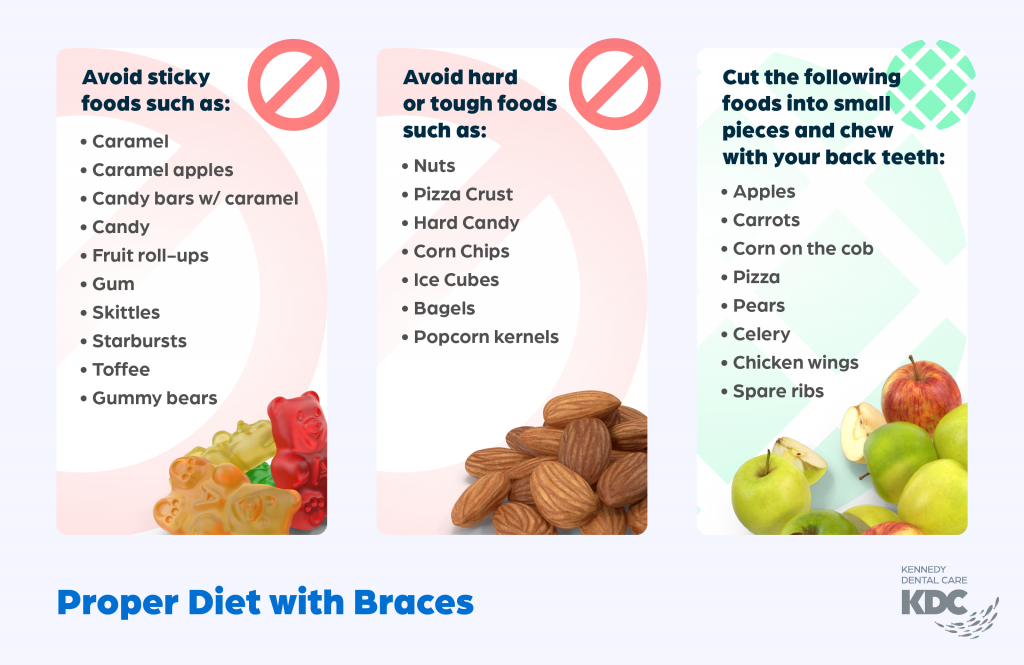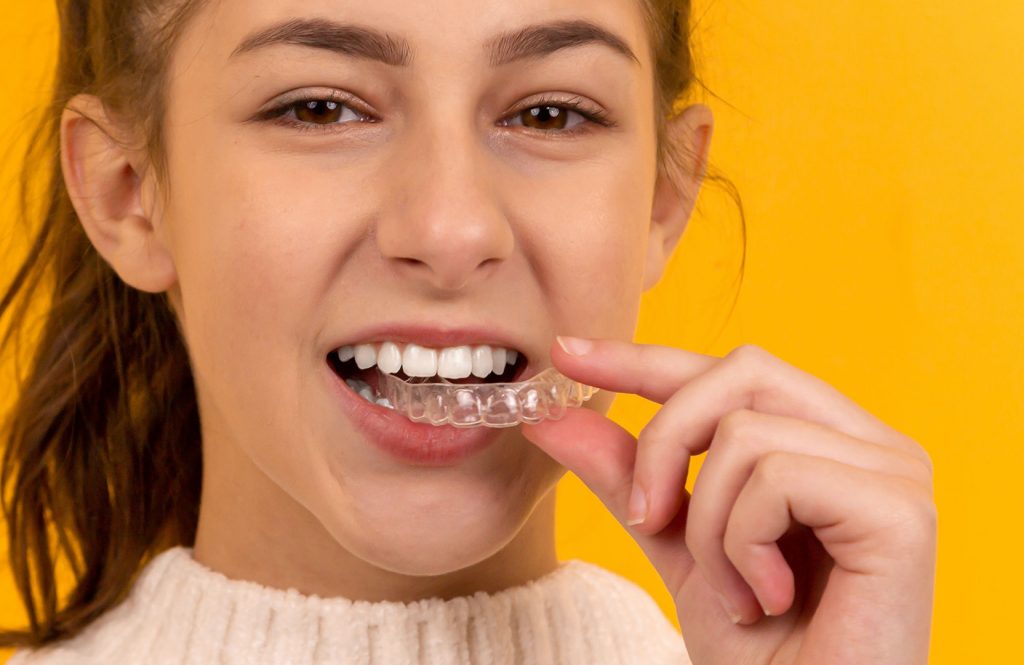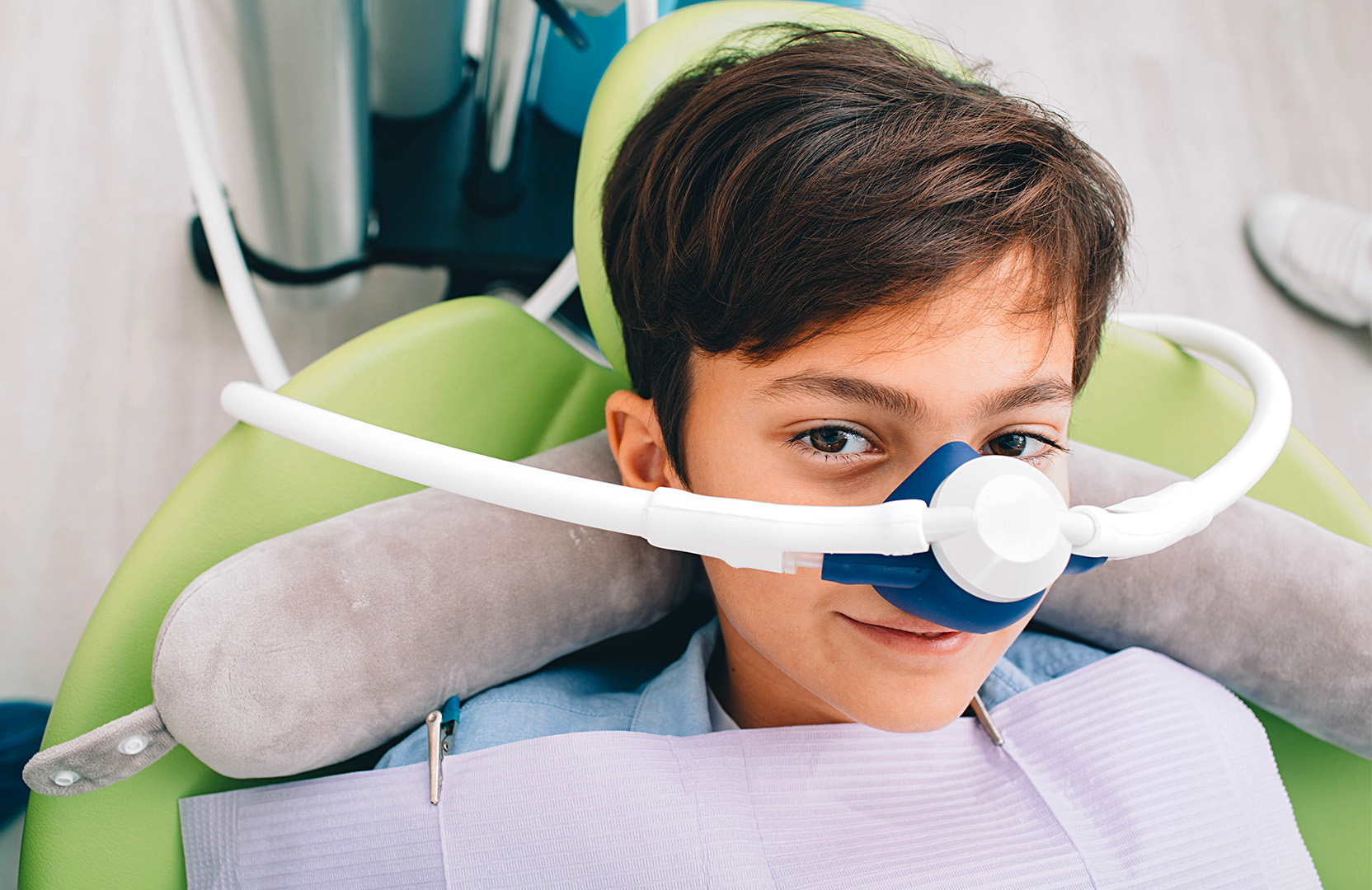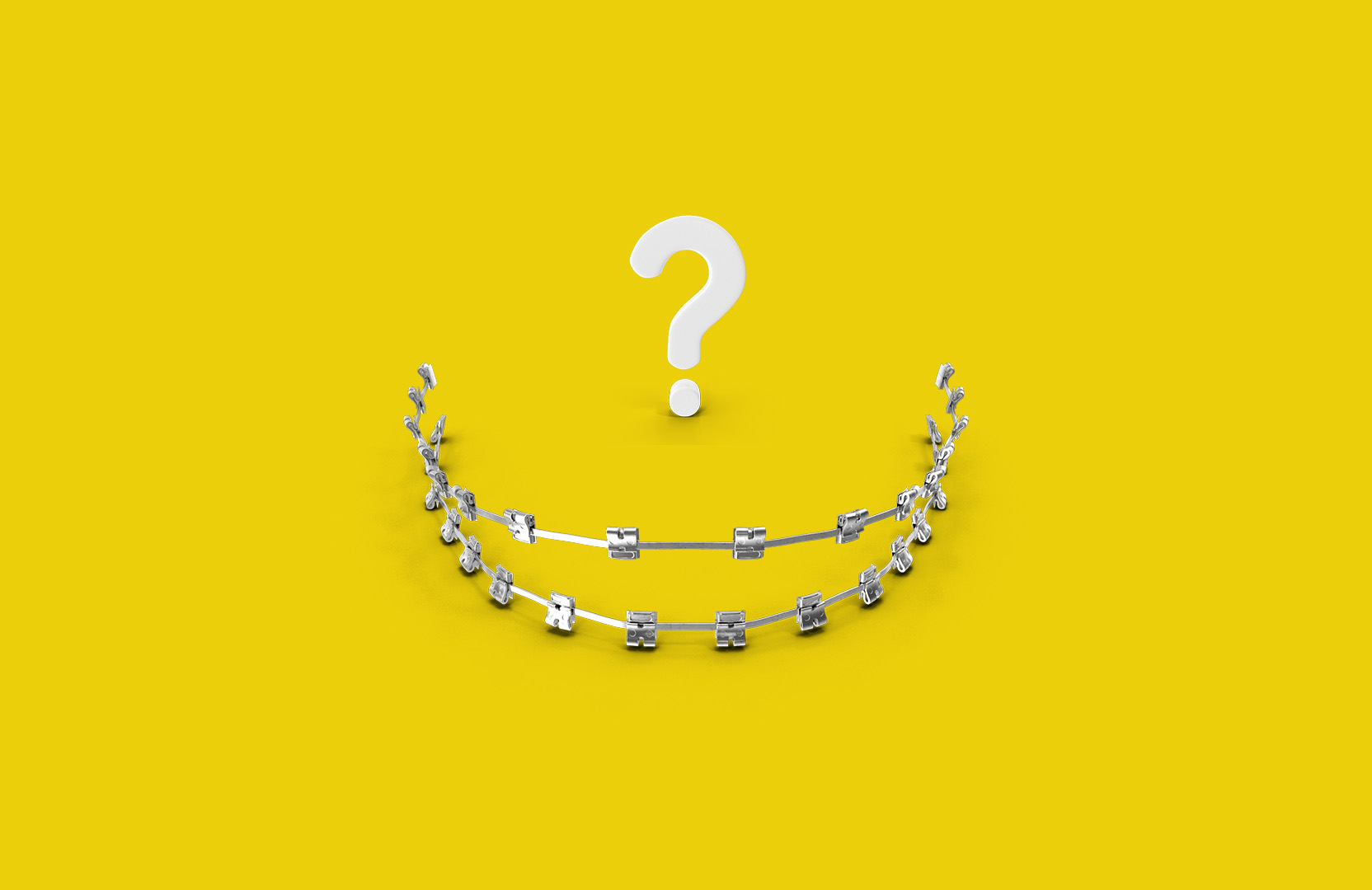As we discussed in “Orthodontics for Children: When and Why You Should Begin Treatment Early,” caring for your child’s smile includes an early-life orthodontic evaluation. Though most children don’t require treatment until later, age 7 is a good time to be evaluated for orthodontic concerns, helping your care provider map out a treatment plan and know what to expect when your child reaches their teens.
Because there are such a wide variety of factors that can cause crooked teeth and affect oral development, there is an equally wide variety of hardware and appliances that can help your child’s smile grow–and stay– straight.
Let’s talk about the common appliances and hardware used in orthodontic care. Understanding the use and maintenance of your orthodontic gear greatly increases your ability to manage, care for, and maximize the benefits of your child’s orthodontic treatment.
Common orthodontic appliances
There are a few common orthodontic appliances used to shape and support healthy growth in your child’s teeth.
Separator: A plastic or rubber donut piece which the dentist uses to create space between your teeth for bands.
O-rings: O rings, also called A-lastics, are little rings used to attach the arch wire to the brackets. These rings come in a wide variety of colors to make braces more fun. A-lastics are changed at every appointment to maintain good attachment of the arch wire to the bracket, enabling patients to enjoy many different color schemes throughout treatment.
Band & Loop (B & L): A Band & Loop is routinely used to hold space for a missing baby back tooth until the permanent tooth can grown in.
Herbst: An appliance designed to encourage the lower jaw to grow forward and catch up to upper jaw growth.
Lower Lingual Arch (LLA): A lower lingual arch is a space maintainer for the lower teeth. It maintains molar positioning and does not move them. It’s by placing bands on the molars and connecting them to a wire that fits up against the inside of the lower teeth. It keeps the molars from migrating forward and prevents them from blocking off the space of teeth that develop later. This is used when baby teeth are lost early, or when lower teeth are slightly crowded in a growing child and you want to avoid removing any permanent teeth to correct the crowding.
Palatal Expander: An appliance which is placed in the roof of the mouth to widen the upper dental arch. The maxilla – or upper dental arch – is joined in the center by a joint, which allows it to be painlessly separated and spread. A temporary space may develop between the upper two front teeth. This will slowly go away in a few days. Once this has occurred, the two halves knit back together and new bone fills in the space.
Quad Helix: This appliance provides continual, gradual pressure in as many as four directions, to move molars, expand or contract arches, or assist in eliminating finger or thumb sucking habits.
Bi Helix: An appliance used to expand the lower arch without interfering with tongue posture or movement.
Hawley: A universally used retainer with many applications; to move teeth, close spaces, maintain alignment during or after treatment.
Nance: The Nance maintains the position of the maxillary molars without using any other teeth. The plastic button on the palate provides stability.
These appliances can help correct many conditions, such as (poor positioning of the teeth) and (overbite, underbite and other common misalignments of the teeth).
Caring for Braces and Appliances
Braces are very helpful for the many kids and teens who suffer from dental misalignments. They help to achieve a beautiful smile, and with proper care, the side effects can be minimal. But, all of the hardware and pieces necessary to make braces work can also trap food and bacteria, leading to gum and tooth issues as well as unsightly staining. That’s why it is vitally important to keep teeth and the braces that hold them clean.
Brushing teeth thoroughly and inspecting braces for leftover food particles is a great way to ensure that these issues are avoided. There are also many foods to avoid or limit, including caramels, gummy bears, Skittles, and more.

You will be shown the proper care of your braces when your orthodontic treatment begins. It’s important to clean your mouth every time you eat. Teeth with braces are harder to clean, and trap food very easily. If food is left lodged in the brackets and wires, it can cause unsightly etching of the enamel on your teeth. Your most important job is to keep your mouth clean. If food is allowed to collect, the symptoms of gum disease will begin to appear. The gums will swell and bleed and the pressure from the disease will slow down tooth movement.
BRUSHING: You should brush your teeth 2-3 times per day.
- Brush back and forth across……between the wires and gums on the upper and lower to loosen any food particles.
- Next, brush correctly as if you had no brackets or appliances on.
- Start on the outside of the uppers with the bristles at a 45 degree angle toward the gum and scrub with a circular motion two or three teeth at a time using ten strokes, then move on.
- Next, do the same on the inner surface of the upper teeth.
- Then, go to the lower teeth and repeat steps 2, 3 and 4.
Look in a mirror to see if you have missed any places. Your teeth, brackets and wires should be free of any food particles and plaque.
Note: If your gums bleed when brushing, do not avoid brushing, but rather continue stimulating the area with the bristles. Be sure to angle your toothbrush so that the area under your gum line is cleaned. After 3 or 4 days of proper brushing, the bleeding should stop and your gums should be healthy again.
FLOSSING: Use a special floss threader to floss with your braces on. Be sure to floss at least once per day.
Fluoride rinse or gel may be recommended for preventive measures.
Appliance Care
Clean the retainer by brushing with toothpaste. If you are wearing a lower fixed retainer be extra careful to brush the wire and the inside of the lower teeth. Always bring your retainer to each appointment. Avoid flipping the retainer with your tongue because it can damage your teeth. Place the retainer in the plastic case when removing it from your mouth. Never wrap the retainer in a paper napkin or tissue because someone may throw it away. Don’t put it in your pocket or you may break or lose it. Excessive heat will warp and ruin the retainer, so don’t leave it in your car during the hot summer months.
Elastics Care
If elastics – called rubber bands – are worn intermittently, they will continually cause more soreness. Sore teeth between appointments usually indicates improper wear of headgear or elastics, or signals inadequate hygiene. Wear your elastics exactly as your orthodontist instructs you. Take your elastics off while brushing. Change elastics as directed, usually once or twice a day.
Caring for a Retainer– and why they’re important
Your child has done the hard work of caring for their braces for months or more. It’s critical to make sure these hard earned results are preserved with regular, proper use of the retainer. The bones, tissues, tooth roots, and other parts of the mouth and jaw must “get used to” the new position of the teeth, adapting around them to keep them in place. Until the teeth are set in place, it’s extremely important to wear a retainer as directed. Your teeth can, and likely will, move without proper retainer use.
Emergencies section
Braces are commonly subject to a few emergencies, most of which are not critical but rather quite uncomfortable. These include loose brackets, poking wires, and sore teeth. Here are a few simple steps that may help with these dental emergencies at home until you are able to visit your dental office.
Loose Bracket
Occasionally, a glued bracket may come loose. You can remove the loose bracket and save it in an envelope to bring to the office. If a bracket becomes loose, call the office as soon as possible in order for us to allow time to re-glue the bracket.
Poking Wire
If a wire is poking your gums or cheek there are several things you can try until before scheduling an office appointment. First, try a ball of wax on the irritating wire. You may also try using a nail clipper or cuticle cutter to cut the extra piece of wire that is sticking out. Sometimes, a poking wire can be safely turned down so that it no longer causes discomfort. You can use a pencil eraser, or some other smooth object to tuck the offending wire out of the way.
Wire Out of Back Brace
Please be careful to avoid hard or sticky foods that may bend the wire or cause it to come out of its proper brace. If this happens, you may use needle nose pliers or tweezers to put the wire back into the hole in the back brace. If you are unable to do this, you may clip the wire to ease the discomfort. Please call the office as soon as possible to schedule an appointment to replace the wire.
Poking Elastic (Rubber Band) Hook
Some brackets have small hooks on them for elastic wear. These hooks can occasionally become irritating to the lips or cheeks. If this happens, you may either use a pencil eraser to carefully push the hook in, or you can place a ball of wax on the hook to make the area feel smooth.
Sore Teeth
You may be experiencing some discomfort after beginning treatment or at the change of wires or adjusting of appliances. This is normal and should diminish within 24-72 hours. A few suggestions to help with the discomfort:
- Rinse with warm water.
- Eat a soft-food diet.
- Take acetaminophen (Tylenol) or ibuprofen (Advil) as directed on the bottle.
- If pain persists more than a few days, call our office.
In the event of a dental emergency, no matter how small, be sure to get in touch with your provider as soon as possible.
Invisalign
Invisalign is an alternative to braces. It’s made from transparent plastic material and custom fitted to your teeth in a series of retainers that allow you to straighten your smile without braces. To learn more about Invisalign, click here.
No matter what your child’s orthodontic care entails, it’s important to have their care managed by a provider who is skilled, knowledgeable, and friendly. This helps your family ensure that your orthodontic experience is as enjoyable as possible.
At Kennedy Dental Care, we’re not just a dental facility– we’re your dental home. Our orthodontics providers are experts in their field, and all Kennedy employees maintain friendly, informative, and comforting demeanors with the kids and teens we treat. We work hard to ensure that your family stays smiling, with top-notch treatment and a welcoming environment.
Learn more about Kennedy Dental Care’s orthodontic offerings here.




